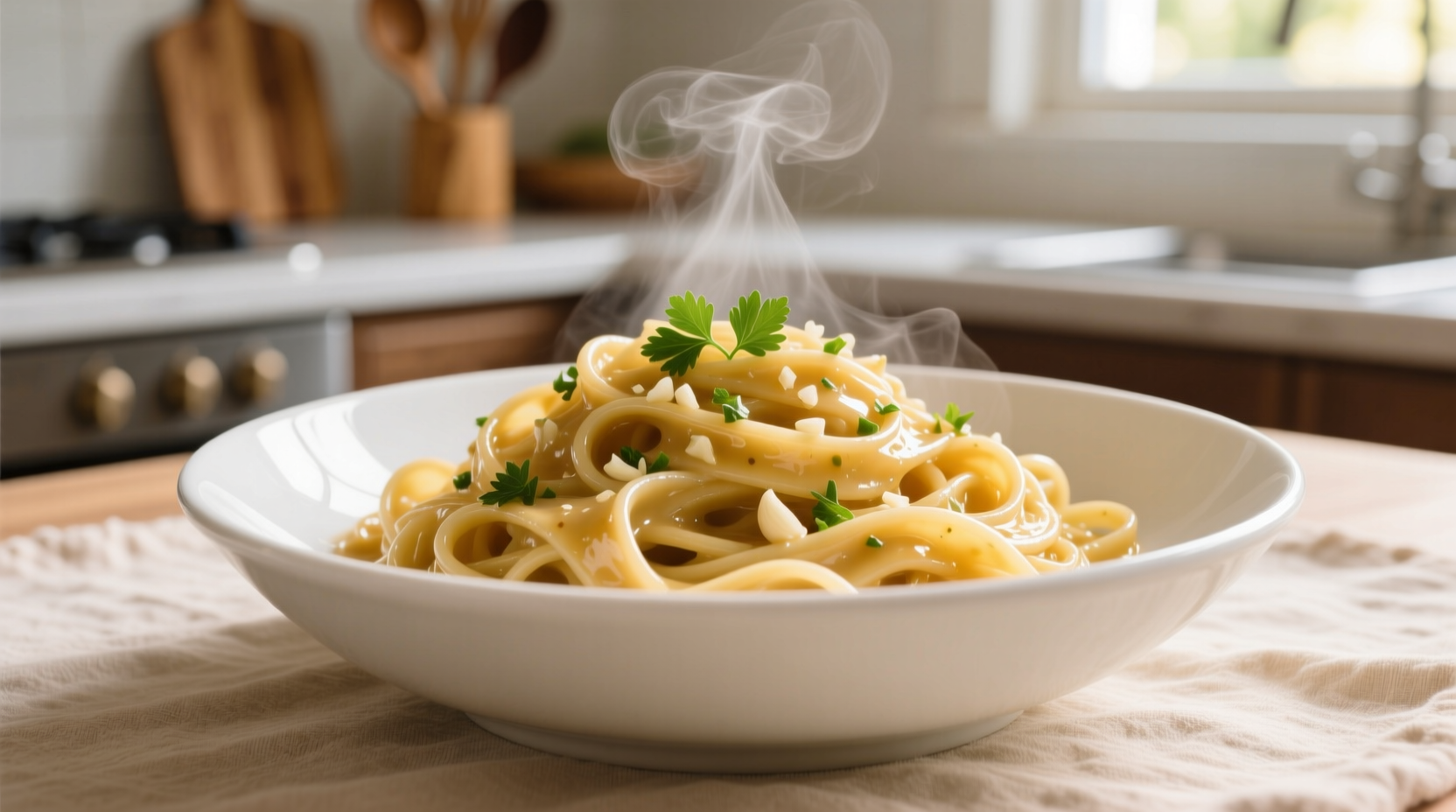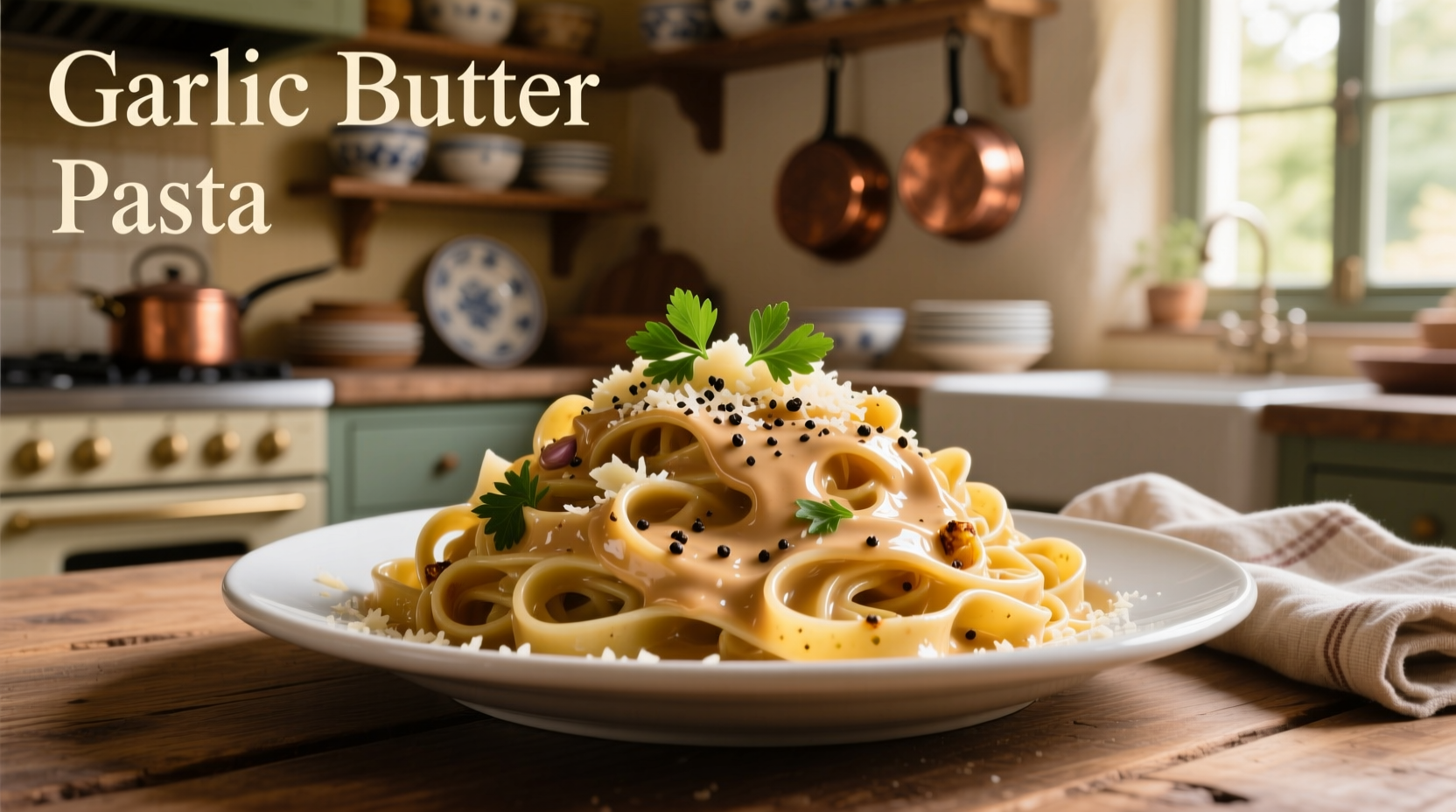Discover how to create the perfect garlic sauce pasta with this comprehensive guide that reveals professional techniques for maximizing flavor while avoiding common pitfalls. Whether you're a beginner cook or looking to refine your skills, you'll learn the exact ratios, timing, and ingredient selection that transform this simple dish into something extraordinary.
The Essential Components of Authentic Garlic Sauce Pasta
Garlic sauce pasta's magic lies in its simplicity and the quality of just a few key ingredients. Unlike cream-based sauces that mask flavors, traditional Italian preparations rely on emulsification techniques where starchy pasta water binds olive oil or butter with freshly minced garlic to create a silky coating for the noodles.
| Ingredient | Traditional Approach | Modern Variations | Why It Matters |
|---|---|---|---|
| Garlic | 3-4 cloves per serving, minced | Roasted garlic for milder flavor | Fresh garlic provides volatile compounds that create complex flavor when properly cooked |
| Fat Base | Extra virgin olive oil | Butter or olive oil-butter blend | Olive oil carries garlic flavor; butter adds richness and helps emulsify sauce |
| Pasta Water | 1/2 cup reserved | With lemon juice for acidity | Starch activates to create creamy texture without dairy |
| Finishing | Parmesan and parsley | Red pepper flakes or lemon zest | Adds complexity and balances garlic's sharpness |
Step-by-Step Preparation Guide
Follow this professional technique to achieve perfectly balanced garlic flavor without bitterness:
- Prepare ingredients first (mise en place): Mince garlic finely but don't use a garlic press which can make it too fine and burn easily
- Cook pasta in well-salted water until al dente, reserving 1/2 cup pasta water before draining
- Heat fat base in large skillet over medium-low heat (never high heat which burns garlic)
- Add garlic when oil is warm but not smoking, stirring constantly for 60-90 seconds until fragrant but not browned
- Add pasta directly to skillet with 1/4 cup reserved pasta water, tossing vigorously for 2-3 minutes
- Emulsify by adding more pasta water as needed until sauce coats noodles evenly
- Finish with grated Parmesan, fresh herbs, and a squeeze of lemon juice

Avoiding Common Mistakes
Professional chefs consistently emphasize these critical points for perfect garlic sauce pasta:
- Never cook garlic at high heat - garlic burns at 325°F (163°C), creating bitter compounds that ruin the dish
- Don't add garlic to cold oil - this extracts too much raw garlic flavor and increases burning risk
- Use fresh garlic, not pre-minced - jarred garlic contains preservatives that alter flavor chemistry
- Reserve enough pasta water - the starch is essential for creating a cohesive sauce without adding cream
- Add cheese off heat - high temperatures cause cheese to seize and become grainy
Historical Context: Garlic in Italian Cuisine
Garlic's journey in Italian cooking reveals why it works so well with pasta. According to research from the University of Bologna's culinary history department, garlic became integral to Italian regional cuisines after the Roman Empire's expansion into Mediterranean territories. The timeline shows:
- 1st Century BCE: Romans adopted garlic from Mediterranean neighbors, using it in early pasta-like dishes
- 14th Century: Garlic appears in the first documented pasta recipes from medieval Italy
- 19th Century: Regional variations emerged as pasta production became widespread
- Post-WWII: Italian immigrants popularized garlic-based pasta dishes globally
This historical evolution explains why garlic sauce pasta works best with specific pasta shapes that capture the oil-based sauce. As documented by the Italian Academy of Cuisine, regional variations developed based on local ingredients:
- Southern Italy: Uses more garlic and olive oil with spaghetti or linguine
- Central Italy: Incorporates pecorino cheese with tonnarelli pasta
- Northern Italy: Features butter-based versions with tagliatelle
When This Recipe Works Best (And When It Doesn't)
Understanding the context boundaries for garlic sauce pasta helps you serve it appropriately. Based on culinary research from the Culinary Institute of America, this dish excels in specific scenarios:
- Ideal for: Quick weeknight meals, light summer dinners, showcasing high-quality olive oil
- Pair with: Simple green salads, grilled vegetables, or crusty bread
- Avoid when: Serving guests who dislike strong garlic flavors or during formal dinner parties
- Not suitable for: Meal prepping beyond 24 hours (garlic flavor intensifies over time)
Popular Variations to Try
Once you've mastered the basic technique, these chef-approved variations add exciting dimensions to your garlic sauce pasta:
- Lemon-Garlic Pasta: Add zest of 1 lemon during final emulsification for bright acidity
- Seafood Garlic Pasta: Toss with sautéed shrimp or scallops in the last 2 minutes of cooking
- Roasted Garlic Version: Use 1 whole roasted garlic bulb for milder, sweeter flavor profile
- Vegan Adaptation: Substitute nutritional yeast for cheese and use olive oil only
- Spicy Arrabbiata Style: Add 1/2 teaspoon red pepper flakes with the garlic
Serving and Storage Tips
Professional chefs emphasize these final touches for restaurant-quality results at home:
- Serve immediately - garlic sauce pasta is best eaten fresh as the sauce separates when cooled
- Plate properly - use warm bowls and twirl pasta with tongs for elegant presentation
- Storage limitations - refrigerate leftovers for up to 24 hours (garlic flavor intensifies)
- Reheating method - add 1 tablespoon water and gently rewarm over low heat while stirring
- Never freeze - the emulsion breaks down and garlic becomes overpowering











 浙公网安备
33010002000092号
浙公网安备
33010002000092号 浙B2-20120091-4
浙B2-20120091-4